DJI Mavic 4 Pro – Sensor Readout Speeds Tested
 Lukas
Zmejevskis
Lukas
Zmejevskis
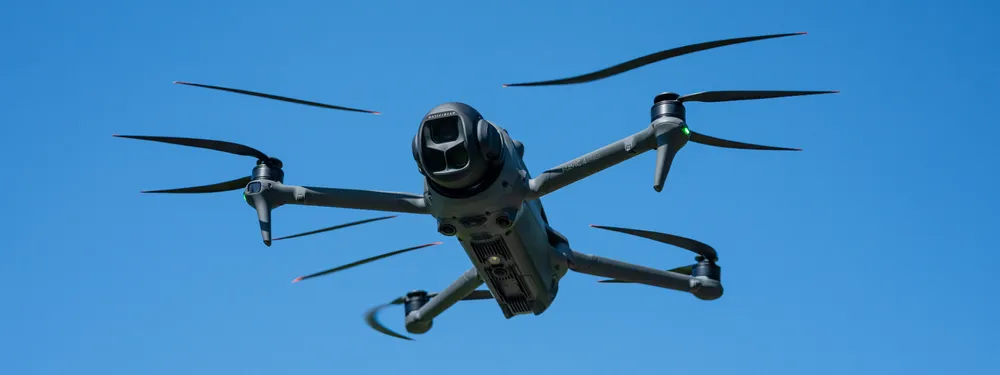
The Mavic 4 Pro is the most capable consumer drone available today. Naturally, it gets pulled into all the usual debates — including the decade-old mechanical vs. electronic shutter discussion. Like its predecessor, the Mavic 4 Pro does not feature a mechanical shutter, which may raise some eyebrows among those still holding onto older beliefs about what is necessary for high-quality photogrammetry. Sensor technology has come a long way, and the Mavic 4 Pro's fast readout speed means you are unlikely to encounter any real-world problems — even during rapid motion or oblique capture scenarios. Let us break it down and revisit this topic for what may be the last time.
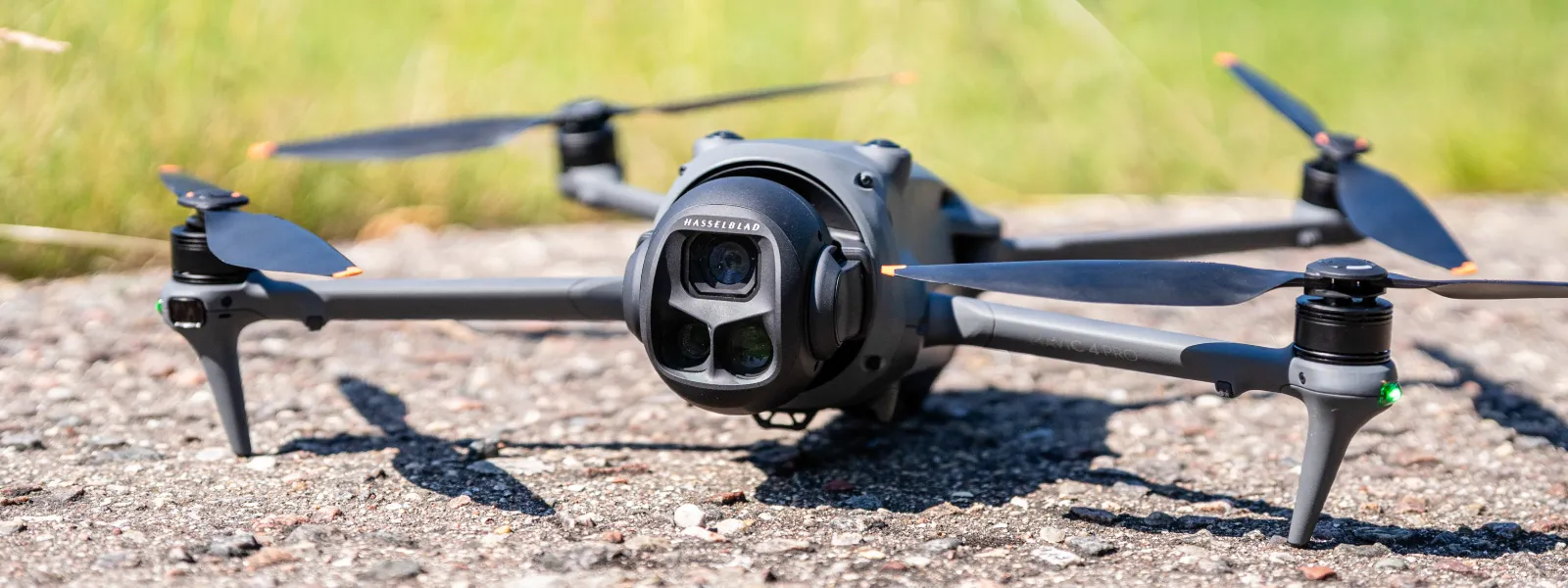 Electronic vs. Mechanical Shutter – Tech Differences
Electronic vs. Mechanical Shutter – Tech Differences
First, it is essential to clarify a common misconception: a mechanical shutter still performs a rolling exposure — just one that is very fast and consistent across the frame due to the physical motion of the shutter curtain. It does not expose the entire sensor at once. Still, it effectively reduces distortion because the "rolling" is hardware-controlled and happens so quickly — in a few milliseconds.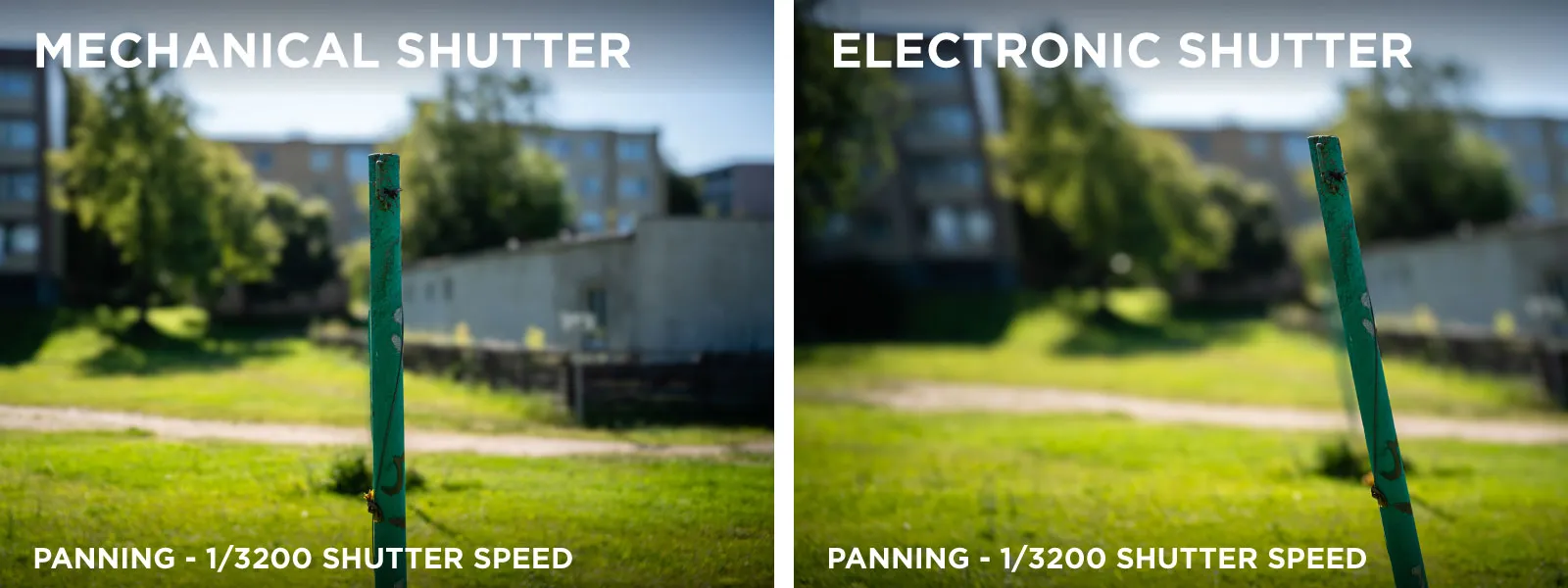 The Mavic 4 Pro uses an electronic rolling shutter. Unlike mechanical shutters, it has no moving parts — exposure is controlled purely by the sensor's internal readout timing. In earlier generations, slow readout speeds caused visible warping when the drone moved too quickly. However, modern sensors have improved enough that rolling shutter artifacts are barely noticeable in most real-world conditions.
The Mavic 4 Pro uses an electronic rolling shutter. Unlike mechanical shutters, it has no moving parts — exposure is controlled purely by the sensor's internal readout timing. In earlier generations, slow readout speeds caused visible warping when the drone moved too quickly. However, modern sensors have improved enough that rolling shutter artifacts are barely noticeable in most real-world conditions.
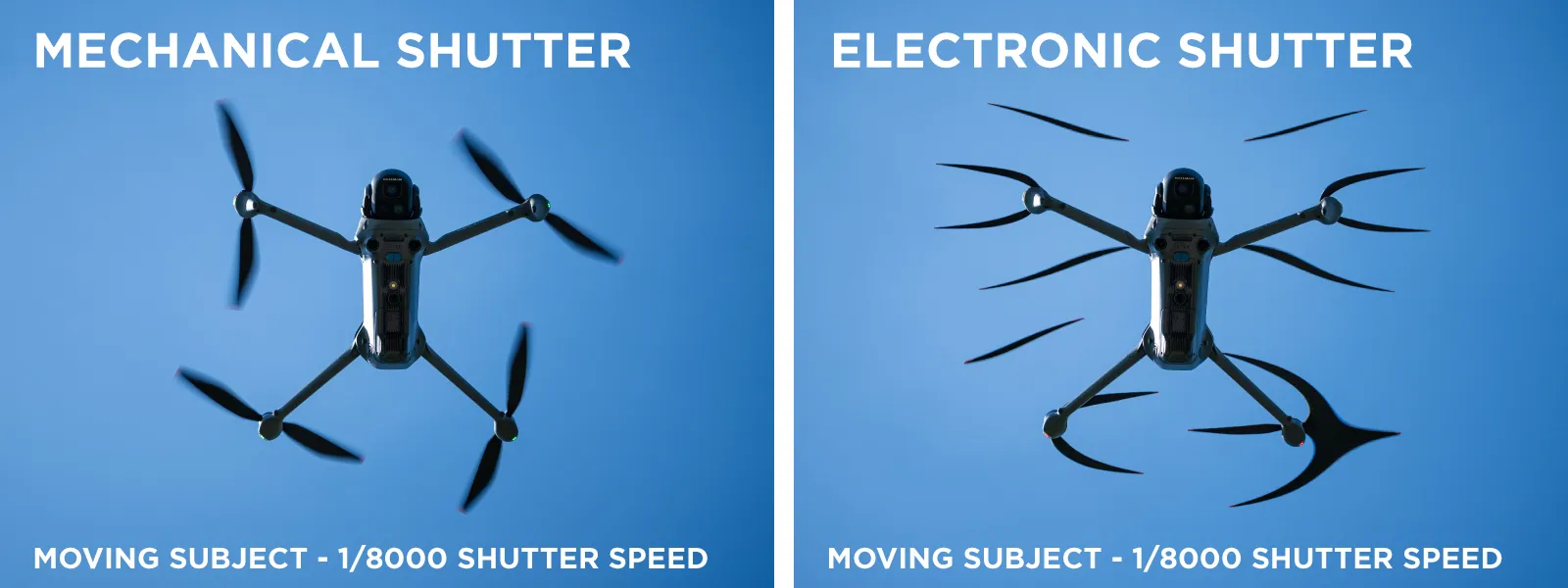 However, this does not mean mechanical shutters will go away anytime soon. High-resolution sensors like the one in the Sony A7RV, which is arguably the best high-resolution full-frame camera on the market, still rely on a mechanical shutter because the 60-megapixel sensor is too slow. The same goes for many other full-frame cameras. At the same time, high-speed flagships such as the Nikon Z9 and Sony A1 II have moved away from mechanical shutters because they utilize fast-reading stacked sensors. We live in a transitional period at the moment.
However, this does not mean mechanical shutters will go away anytime soon. High-resolution sensors like the one in the Sony A7RV, which is arguably the best high-resolution full-frame camera on the market, still rely on a mechanical shutter because the 60-megapixel sensor is too slow. The same goes for many other full-frame cameras. At the same time, high-speed flagships such as the Nikon Z9 and Sony A1 II have moved away from mechanical shutters because they utilize fast-reading stacked sensors. We live in a transitional period at the moment.
The ideal solution would be a global shutter, which exposes all pixels at the same time. These are used in some industrial and machine vision cameras, and we just got the first full-frame camera with one (Sony A9 III), but they are not yet found in DJI's consumer or prosumer drones — likely due to sensor cost and limitations in overall sensor technology. For now, readout speed is the key variable when comparing drone shutter performance.
Rolling Shutter Effect In Practice and Photogrammetry
The key concerns in photogrammetry are geometric accuracy and accurate real-world representation—not just image quality. A slow rolling shutter can cause distortion if the drone or subject moves quickly, resulting in warped buildings, misaligned edges, or reconstruction errors in dense models.
Electronic vs. Mechanical Shutter in Detail
DJI Mavic 3 Mechanical Shutter. Sensor Readout Speed Explained
This was a real issue in older drones or cameras with slower readout speeds. Various photogrammetry software even had correction profiles for that. But with modern sensor tech, that window of distortion has shrunk dramatically. And in practical field conditions, we rarely fly fast enough for it to matter. I previously tested all my DJI drones and now have the Mavic 4 Pro.
DJI Mavic 4 Pro Readout Speed
Measuring rolling shutter readout speed is straightforward when using a known flicker frequency. The simplest method involves photographing a screen that refreshes at a consistent rate, such as a monitor or smartphone display.
Using the tool available at ufotest.com, a 120 Hz display can effectively be turned into a 60 Hz strobe source. This creates alternating light and dark bands during exposure, corresponding to how long the sensor takes to read the image line by line. I used the 120 Hz OLED display on the Apple iPhone 16 Pro Max for this test to ensure clean and sharp transitions.
I captured test images using the primary Hasselblad camera, the medium telephoto, and the telephoto zoom modules. In each case, the drone was set to use the electronic shutter. The resulting images show a pattern of black and white bands — with each stripe representing approximately 16.6 milliseconds (1/60 of a second). By counting these bands, we can determine how long the sensor takes to read the full frame from top to bottom.
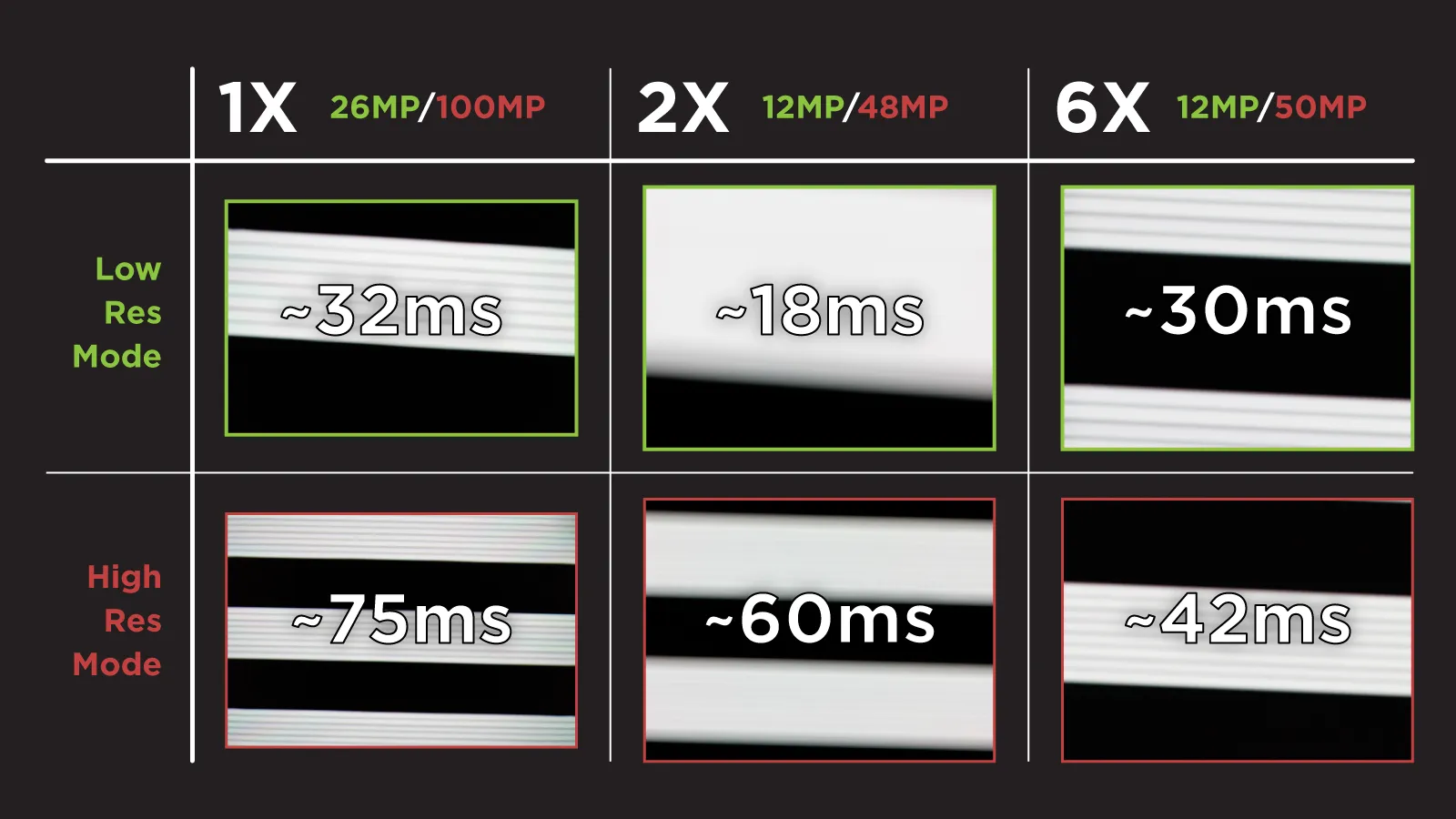 The results above show that the different readout modes matter. As we know, these are quad-bayer sensors where each pixel is split into four, and we can get the "full" resolution, which will provide incrementally more detail but at a cost. One of the drawbacks is the slower readout speed, which gets noticeably slow in the 100-megapixel main shooter photos. However, the 100-megapixel capture slows everything down to 10s capture intervals, which makes this mode useless or forced into extremely slow flight speeds for photogrammetry. I would completely avoid all high resolution capture modes for any kind of moving capture.
The results above show that the different readout modes matter. As we know, these are quad-bayer sensors where each pixel is split into four, and we can get the "full" resolution, which will provide incrementally more detail but at a cost. One of the drawbacks is the slower readout speed, which gets noticeably slow in the 100-megapixel main shooter photos. However, the 100-megapixel capture slows everything down to 10s capture intervals, which makes this mode useless or forced into extremely slow flight speeds for photogrammetry. I would completely avoid all high resolution capture modes for any kind of moving capture.
Does Readout Speed Matter Nowadays?
In most scenarios? Not really anymore. Unless you are flying aggressively fast at low altitudes — the modern rolling shutters in drones like the Mavic 4 Pro are good enough in the lower-resolution readout modes.
The industry has quietly moved past the mechanical shutter debate, even if online chatter has not. For mapping, modeling, and precise inspection, what matters more is image quality, flight performance, and overall stability. And the Mavic 4 Pro has all of these.
If we push flight speed in photogrammetry and photography in general, we will often encounter good ol' motion blur first. My Pixpro photogrammetry calculator even has a field to calculate the maximum theoretical speed we can fly at a given shutter speed and altitude (the distance from the camera to the subject). That, along with our Pixpro Waypoints service, which provides automated photogrammetric flight workarounds where you can set your speed precisely, means you will never have to worry about motion blur or a slow rolling shutter again.
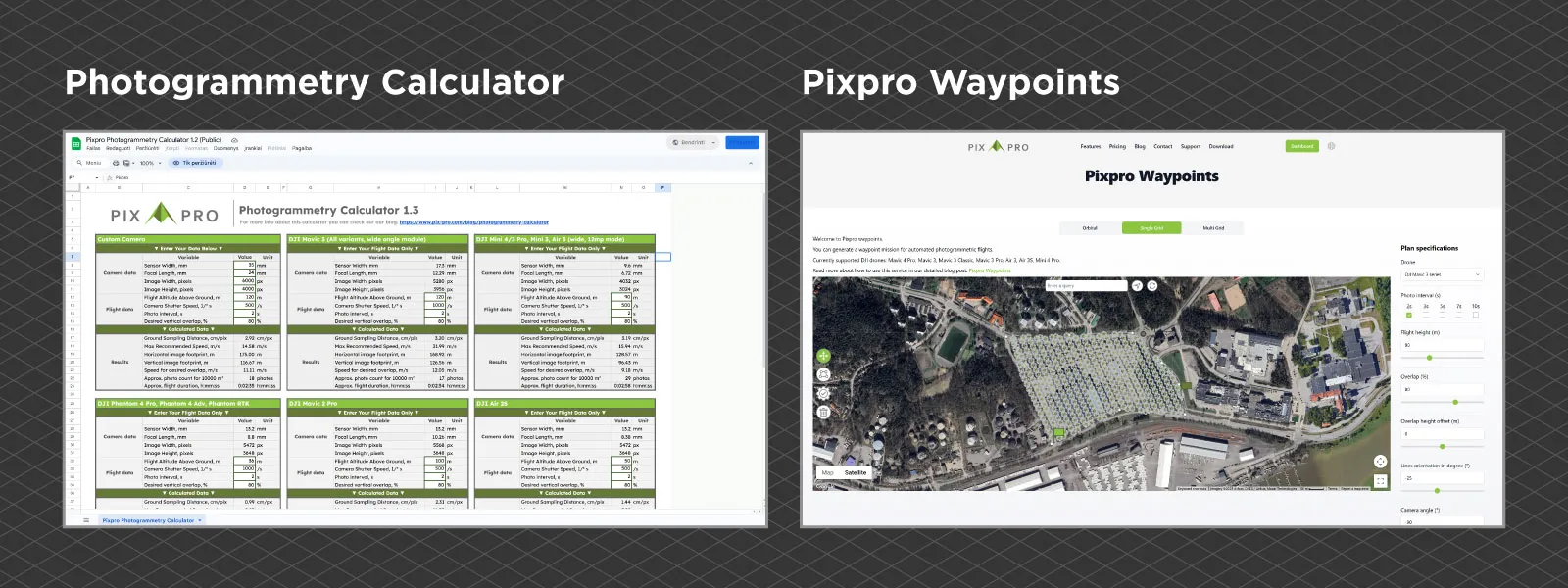 Conclusion
Conclusion
The Mavic 4 Pro does not have a mechanical shutter. Its electronic shutter is fast enough to handle photogrammetry work without introducing distortion or structural errors in the resulting models.
All three of its camera modules demonstrate sufficiently low readout times that rolling shutter artifacts are practically irrelevant in real-world use. As long as basic principles like controlled speed, consistent overlap, and sharp exposure are followed, the Mavic 4 Pro delivers clean, accurate, and highly usable data. This is as long as we use the lower resolution modes, which are the default and the best choice for most cases.
We are likely reaching the end of the mechanical shutter era. With electronic shutters improving every generation, this may be the last time we need to revisit the topic at all, especially if stacked. Eventually, global shutter sensors will trickle down to all imaging devices.

Photographer - Drone Pilot - Photogrammetrist. Years of experience in gathering data for photogrammetry projects, client support and consultations, software testing, and working with development and marketing teams. Feel free to contact me via Pixpro Discord or email (l.zmejevskis@pix-pro.com) if you have any questions about our blog.
Related Blog Posts
Our Related Posts
All of our tools and technologies are designed, modified and updated keeping your needs in mind
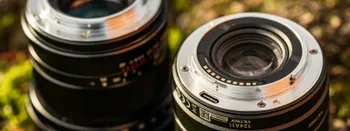
Viltrox 14mm vs. Pergear 14 mm Lens – Choosing for Interior Photogrammetry
Ultrawide-angle lenses are most commonly used in photogrammetry for interior scanning. I am planning to do an interior-type construction site scan, so I need a lens for my Sony full-frame camera. There are plenty of premium wide-angle options, but I need something that provides the best image qualit

Gaussian Splatting vs. Photogrammetry
Every few years, something new shows up online claiming to “revolutionize” 3D reconstruction. A while back it was NeRFs. Now it is Gaussian splatting — with endless YouTube clips of people walking through photorealistic 3D scenes that seem to render instantly.
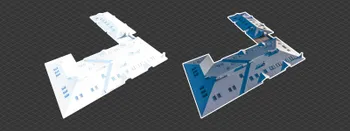
Photo Dynamic Range - Real Life Tests and Advice
Dynamic range is an inescapable term when talking about digital photo or video capture. Our human vision has an incredible ability to adapt, allowing us to perceive both very dark and very bright scenes. When a digital imaging sensor or even a chemical negative captures a scene frozen in time, it is
Ready to get started with your project?
You can choose from our three different plans or ask for a custom solution where you can process as many photos as you like!
Free 14-day trial. Cancel any time.
.svg@webp)